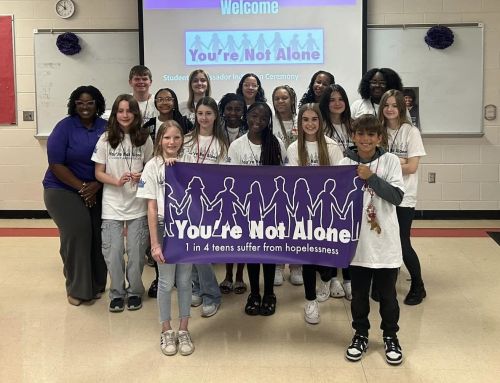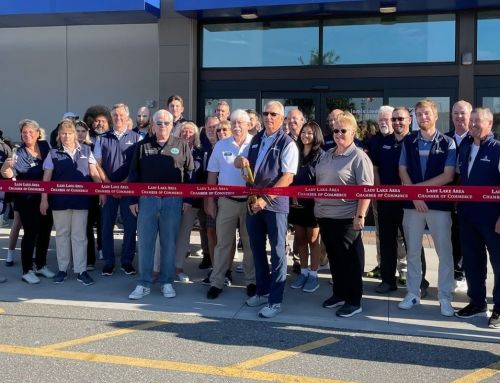By Akers Editorial
OUT+ABOUT: D-Day in New Orleans
If a trip to Normandy is not in this year’s budget, head west to New Orleans where the National World War II Museum will engage your mind, senses, and heart as you hear stories from the Greatest Generation.
STORY: Mary Ann Desantis PHOTOS: Tony Desantis+Courtesy of The National WWII Museum
 “All aboard,” the conductor bellowed at the door of a vintage-looking Pullman train car inside the National World War II Museum. I quickly shed my “Rosie the Riveter” garb and grabbed my camera from the woman who was taking my picture. Missing the train in 1941 could have resulted in a court-martial. Today, it means passing up an interactive journey through history as a narrator describes scenes new recruits experienced when they left home to fight in foreign lands.
“All aboard,” the conductor bellowed at the door of a vintage-looking Pullman train car inside the National World War II Museum. I quickly shed my “Rosie the Riveter” garb and grabbed my camera from the woman who was taking my picture. Missing the train in 1941 could have resulted in a court-martial. Today, it means passing up an interactive journey through history as a narrator describes scenes new recruits experienced when they left home to fight in foreign lands.
And what they must have felt.
“I was just 18 years old and I’d never been further than 20 miles from New Orleans when I found myself on a train going all the way to San Francisco. My mother, girlfriend, and sisters saw me off. I was more excited than scared at that point,” said WWII veteran Forrest Villarubia, who serves as a museum volunteer.
Open since June 6, 2000, the National WWII Museum in New Orleans covers an entire block in the city’s Central Business District. Founded by the late historian and author Stephen Ambrose, the museum was originally known as the National D-Day Museum. In 2003, Congress officially designated it as America’s National WWII Museum.
 Today, three state-of-the-art pavilions contain more than 100,000 artifacts that tell the story of “the war that changed the world.” Hundreds of photos and oral history recordings of servicemen and servicewomen who were part of America’s “Greatest Generation” help visitors understand why and how the war was fought, and what such sacrifices meant for future generations.
Today, three state-of-the-art pavilions contain more than 100,000 artifacts that tell the story of “the war that changed the world.” Hundreds of photos and oral history recordings of servicemen and servicewomen who were part of America’s “Greatest Generation” help visitors understand why and how the war was fought, and what such sacrifices meant for future generations.
 Why New Orleans?
Why New Orleans?
Dr. Ambrose spent decades researching and writing about D-Day, General Dwight D. Eisenhower, and the war. After collecting more than 2,000 oral histories from veterans, the University of New Orleans professor realized the U.S. had no museum on the homefront to honor them. He also knew New Orleans had been home to Higgins Industries, a small boat company owned by entrepreneur Andrew Jackson Higgins, who originally built boats designed to operate in Louisiana’s shallow bayous. Higgins modified his design to produce a unique collection of amphibious boats that could deliver men and equipment safely to shore. Without his boats, which became known as Higgins boats, the strategy of the war would have been different, Eisenhower said many years later.
Planning your visit
Tour operators may tell you that you only need a couple of hours to see the National WWII Museum. However, the complex is so large and the exhibits so compelling you may want more time, especially if you plan to see the films and enjoy the excellent on-site restaurants. A second-day pass is available for $6 when you buy regular admission, which is $22 for adults; $19 for seniors; and $13 for students. World War II veterans get in free. Buy your tickets online (nationalww2museum.org/visit) before your trip so you can be assured of getting a ticket for the highly recommended “Beyond All Boundaries” 4D film, produced and narrated by actor Tom Hanks. Screenings in the Solomon Victory Theater are hourly but advance tickets are recommended, especially if you want to see an early showing. The extra $5 for the 45-minute film is worth the price, and it’s a great overview before you begin your tour.
If you arrive at the museum before it opens at 9a.m., head over to the museum’s 1940s-era Soda Shop on the Magazine Street side where you can build your own biscuit for breakfast. The towering creation certainly will last you most of the day, or until you can grab authentic seafood gumbo or a 99-cent meat pie in Chef John Besh’s American Sector restaurant next door to the Solomon Victory Theater. The American Sector is quite affordable compared to restaurants in the French Quarter.
While the European and Pacific military campaigns are covered in the Louisiana Pavilion, the U.S. Freedom Pavilion: The Boeing Center honors everyday citizens who did their part at home. The exhibits showcase how the nation mobilized for war. The Freedom Pavilion also houses the unique and thought-provoking “What Would You Do” interactive experience that presents difficult and ethical decisions faced by real people during the war.
If time allows, sign up for one of the “Behind the Scenes” tours. Last fall, I was able to watch volunteers restore a PT-305 boat in the Kushner Restoration Pavilion. The boat, originally built by Higgins Industries, will eventually be operational on nearby Lake Pontchartrain.
And if the National WWII Museum takes several hours to tour now, it will take even longer in the future. A $320 million expansion project is scheduled to open in 2017. “The Road to Victory: A Vision for Future Generations” will continue the story of the American experience during the war with additional exhibits, libraries, and archives.
[notification type=”alert-info” close=”false” ]TRAVEL TIP:The National WWII Museum is located near Lee Circle where the St. Charles Avenue Streetcar Line circles before heading on its way to Canal Street near the French Quarter. Since the museum was the primary focus of my trip, I found it convenient to stay nearby at the small, but charming Hotel Modern around the corner. Access to New Orleans’ major tourist attractions was just a streetcar ride away, and the hotel bill for two nights was less than one night in a French Quarter hotel.[/notification]

































